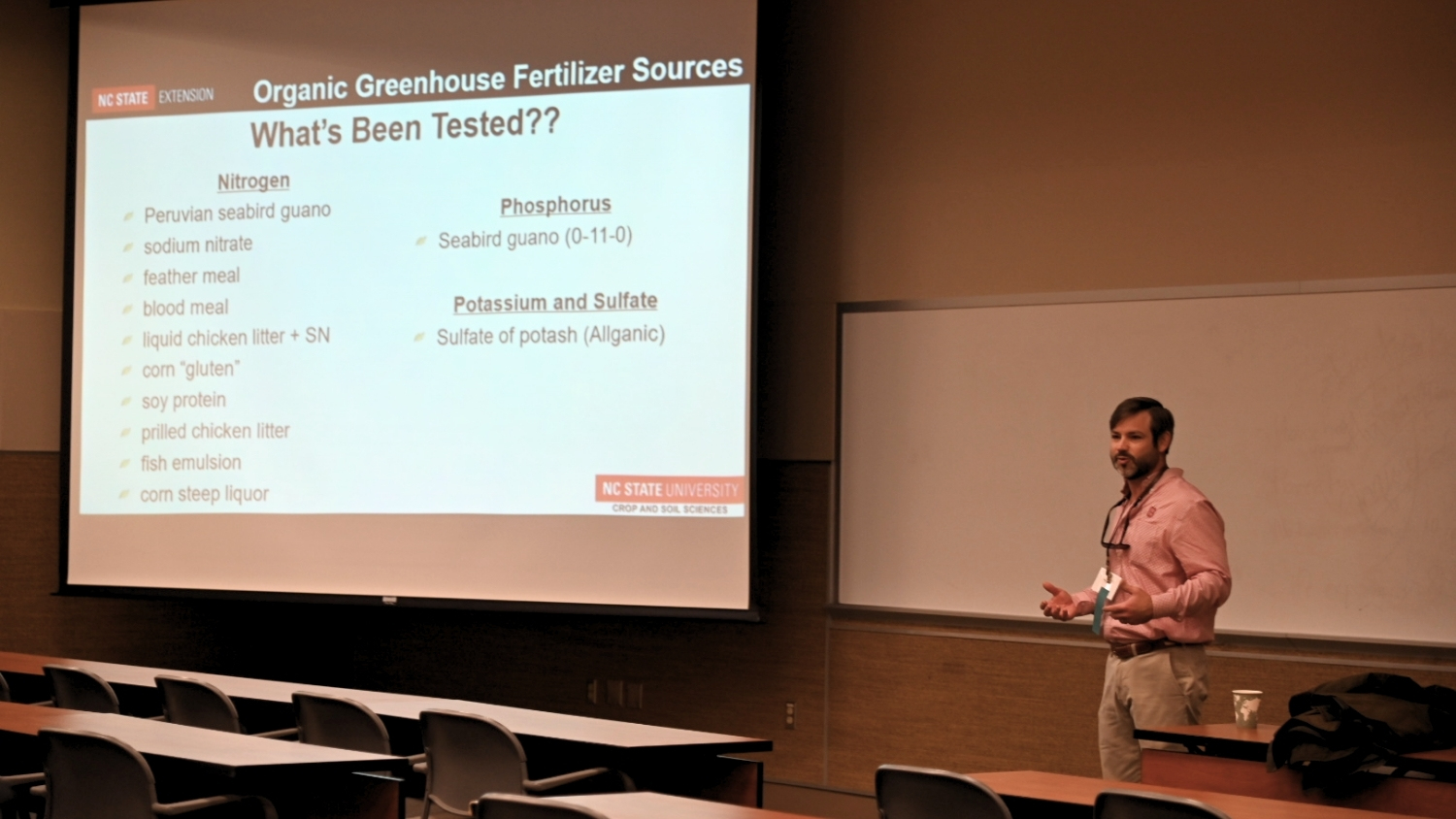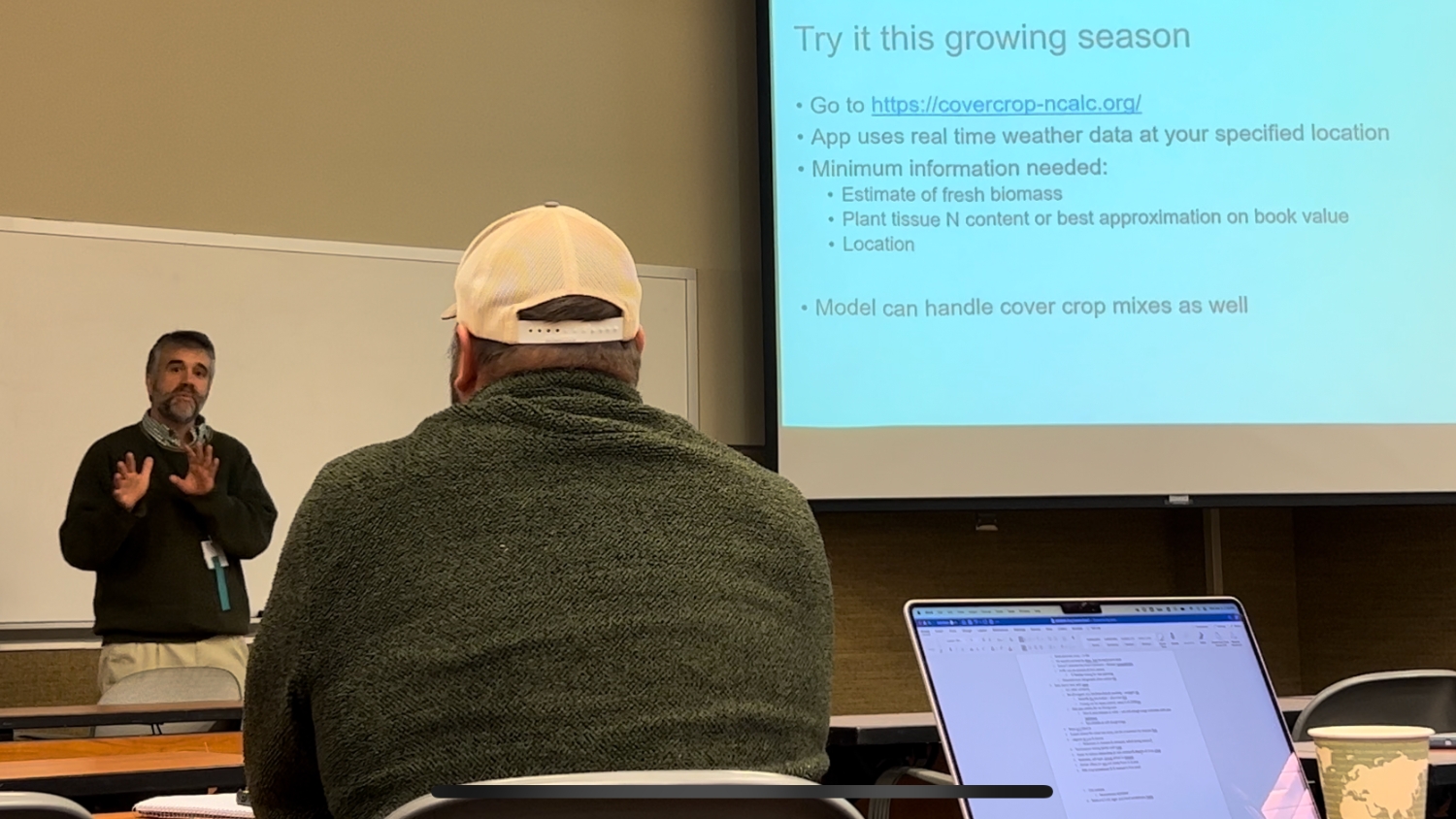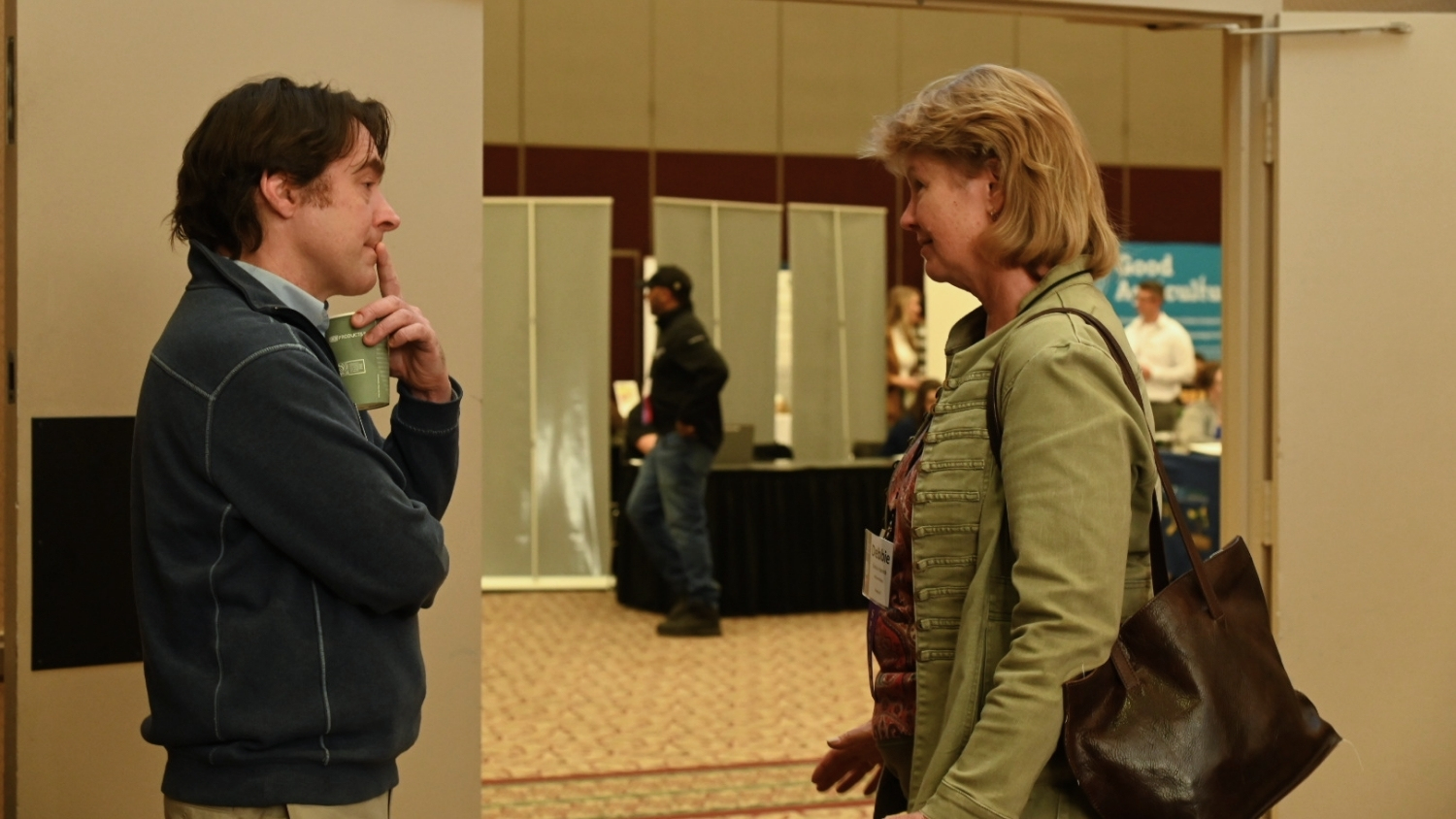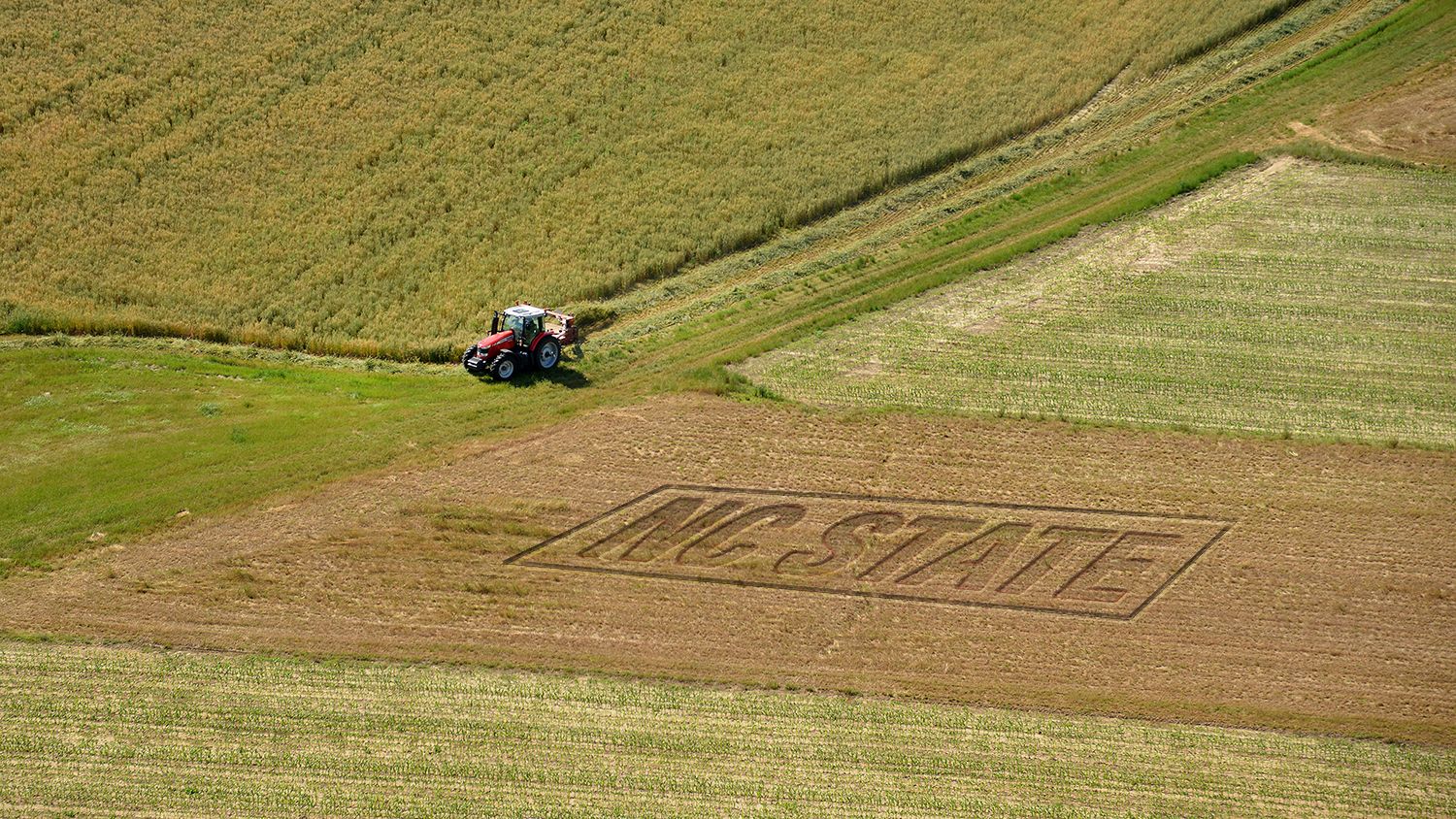
This month, North Carolina State University and Carolina Farm Stewardship Association (CFSA) co-hosted their twelfth annual Organic Livestock and Commodities Conference in Raleigh, North Carolina. CFSA’s farmer members provide input on requested conference topics. This year’s event included workshops following four key themes: pastured livestock, soil health, farm business and advocacy, and organic crops.
NC State faculty from three departments, including crop and soil sciences, horticultural science and agricultural resource economics, presented to a diverse group of growers and industry professionals.

Alternative Crops Show Multipurpose Promise
Extension specialist David Suchoff presented his alternative crops research program including sesame, sunflowers and fiber hemp. His research investigates the agronomics and economic potential for these new crops, many of which mesh with growers’ existing equipment and operations. He says that alternative crops offer growers opportunities to diversify their cash crop rotations and provide creative interventions.

“The research continues, but we are excited to see that several sesame varieties are showing strong resistance to four nematodes that can cause significant losses in soybeans, sweet potatoes, and many of our common commodity crops,” Suchoff said.
Another burgeoning revenue opportunity is fiber hemp, the THC-free cannabis cousin destined for textile manufacturing. High-yielding varieties and two new NC hemp processing hubs are opening doors to a potentially lucrative apparel market.
“We are evaluating Chinese fiber hemp varieties that are more than tripling our yields,” Suchoff said. “And now, two new processing facilities make North Carolina the only state in the U.S. with all major fiber hemp processing capabilities. The demand and capacity are there. Now we just need to address some of the agronomic challenges to meet that need.”
The conference’s keynote speaker, Patrick Brown, grows multiple crops on fourth-generation land in Warren County, NC. In addition to a monthly community-supported agriculture produce program, Brown also grows industrial hemp and will serve as one of Suchoff’s on-farm trial sites in 2023.
“Hemp is an important part of our diversified crop portfolio,” Brown said. “Participating in Dr. Suchoff’s fiber hemp research will help us and fellow growers investigate the nuances of this crop and the developing market. We look seriously at every profitable avenue to buffer economic risk.”
Fertilizing The King of Cash Crops
Organic tobacco might seem like an oxymoron, but it’s a robust niche market, particularly for an emerging domestic market and export to Europe. Adding the organic revenue premium to the state’s historical king of cash crops makes it an attractive choice for those with allotments.
Extension specialist Matthew Vann presented research on one of the biggest challenges in organic tobacco, producing vigorous transplants without synthetic fertilizer. His group has been evaluating multiple naturally-sourced nutrient options. Peruvian seabird guano is their current top performer.
“A well-balanced nutrient program can be difficult to achieve in a tobacco float system because there aren’t custom blended materials formulated for tobacco seedling production,” Vann said. “We’ve found that Peruvian seabird guano quickly breaks down in an aquatic system to provide adequate nitrogen and phosphorus. Combined with organic potassium sulfate, this program can produce transplant-ready seedlings in 50-60 days, similar to a conventional system.”

Quantifying Homegrown Nitrogen
For growers looking to offset fertilizer costs or improve their soil health before a cash crop, cover crops shine. Growers have long used legumes as nitrogen fixers in their traditional crop rotation. But knowing how much nitrogen a cover crop produced was anyone’s guess until now.
Crop and soil sciences researcher Chris Reberg-Horton provided a primer on cover crops and introduced a new web-based tool from the Precision Sustainable Ag Network that will allow growers to more accurately estimate the residual soil nitrogen from a cover crop, including mixed species.

“Precision nitrogen management is one of the best win-win scenarios in agriculture,” Reberg-Horton said. “Farmers want to get their nitrogen management right because it’s an expensive input, and society wants it right because it’s an environmental concern.”
Fellow researcher Alex Woodley presented data on nitrogen release from cover crops. He says the research has implications for the quantity of supplemental nitrogen legumes provide and also for its timing.
“We used to think that the nitrogen benefits of a cover crop could extend throughout the summer and fall ,” Woodley said. “But we now see, especially under high heat and moisture, that this legume nitrogen is available and gone, often within the first few months after termination.”

Strengthening Small Farms With Science
North Carolina’s 46,000 farms average 182 acres in size. CFSA’s membership represents some of the smallest farms in the state whose average annual revenue grosses less than $50,000. Many of their members are beginning, non-traditional, and farmers of color who lean on the organization for training, program assistance and peer-to-peer networking.
Roland McReynolds is CFSA’s executive director.
“We’ve seen over the past few years that our food infrastructure is concentrated and brittle,” McReynolds said. “Diversifying both the production and procurement of local food is essential to equity and sustainability. CFSA’s partnerships and programs support our growers’ success through science-based skills and knowledge.”

McReynolds also serves on the external advisory board for NC State’s Department of Crop and Soil Sciences. The fifteen-member group of growers and industry professionals meet throughout the year to provide strategic guidance and oversight on the department’s academic, research and extension work.
Jeff Mullahey heads the department.
“Our vision is to be a world leader in crop and soil sciences education,” Mullahey said. “Organizations like CFSA, along with all of our advisory board, identify emerging needs and help us develop partnerships and collaborations that support our vision and grow our department.”
Want More Pack Impact?
Crop and Soil Sciences’ research impacts farmers, students, and NC citizens through innovations in food, feed, fuel, and fiber. Follow how our discoveries affect agriculture and environmental science by joining our weekly newsfeed.
If you are a student interested in agronomy or crop production, investigate our undergraduate and graduate degree programs. Then join us for a guided email tour of our department and university.
Improving NC’s agricultural economy through diversification is just part of how we are growing the future.
